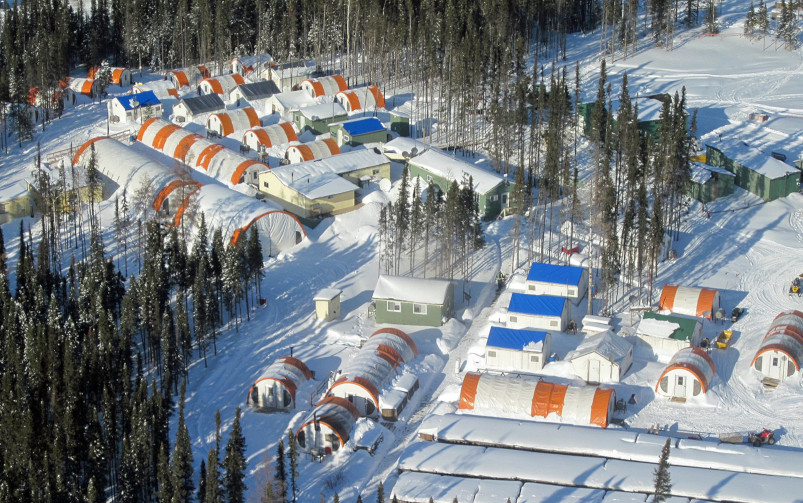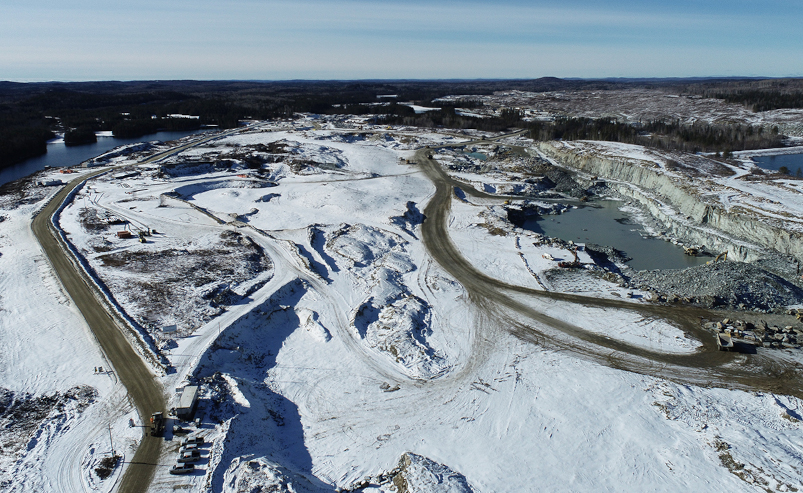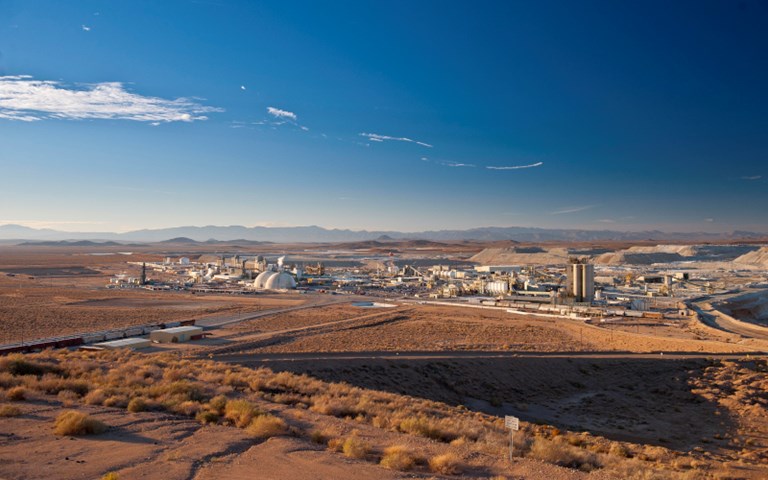Rio Tinto will be using Heliogen's solar power technology to help power its operations at its mine in Boron, California. Courtesy of Rio Tinto.
(Like what you’re reading? Get our weekly recap delivered straight to your inbox each Friday.)
Welcome back to your weekly mining news recap, where we catch you up on some of the news you may have missed. This week’s headlines include Rio Tinto implementing Heliogen’s solar technology to power its Boron mine, Ontario government providing $5 million in funding to a mining exploration program for junior miners and the potential impacts of the blockage at the Suez Canal.
The Supreme Court of Canada has ruled the carbon tax imposed by the federal Liberal government on provinces is constitutional, as it meets an important matter of national concern, reported the Toronto Star. The current price of carbon sits at $30 per tonne and will rise to $170 per tonne by 2030, in an effort to meet the government’s climate plan of net-zero emission by 2050. Federal Conservative Party of Canada leader Erin O’Toole said he opposes the “Trudeau Carbon Tax,” and will likely replace it with a “comprehensive” climate plan if his party wins the next federal election.
The future of the coal industry has diverging paths. On one hand, demand for thermal coal in Canada is dwindling as provinces move towards more natural gas and renewable energy production. Governments will have to meet the challenge of helping transition coals workers into other employment opportunities. Metallurgical coal has better prospects, however, looking further into the future, growing innovations in the steelmaking sector could trigger a decline in the need for met coal, too.
At the onset of the global pandemic, New Gold and Agnico Eagle were some of the first mining companies to be proactive and set-up COVID-19 testing facilities at their various operation sites. New Gold tests about 200 employees a week and was able to return to a full mining operation by April 2020 after a two-week suspension in March. Agnico Eagle does around 250 tests per day and reported 18 positive tests from mid-Jan 2021 to mid-February.
Rio Tinto is facing a class action over its Oyu Tolgoi copper-gold mine expansion in Mongolia for allegedly concealing the real reasons for the delays and cost increases from investors for months, as reported by Mining.com. Rio-controlled Turquoise Hill’s shareholder Pentwater Capital Management is claiming the delays and cost overruns of the project were due to defective steel, deficient engineering, and poor procurement and construction that forced the majority of one of the mine’s shafts to be rebuilt, as opposed to the given reason of geotechnical problems.
Under the Ontario Junior Exploration program, the provincial government will be providing $5 million over two years to boost mineral exploration and discovery opportunities, as reported by Investment Executive. Junior mining companies can ask for up to $200,000 per mineral exploration or development project from the new initiative announced during the recent Ontario budget, which is intended to help attract investment to the sector.
Rio Tinto has signed an agreement with renewable energy company Heliogen to explore the use of solar technology to power Rio Tinto’s borates mine in Boron, California, as reported by Mining.com. Heliogen will implement its artificial intelligence technology to control a network of mirrors able to concentrate sunlight on boilers to generate up to 35,000 pounds per hour of steam to power the mine. The project has the potential to reduce the site’s carbon emissions by seven per cent. The project is expected to start operations in 2022.
As demands for metals are expected to rise, Canada is focused on protecting the security of its critical mineral supply chains by tightening its foreign investment rules, as reported by Reuters. The government's updated guidelines address national security concerns over foreign investments by companies that are state-owned or state-influenced investors, or involved in potentially sensitive technologies and personal data.
Canada’s Oil Sands Innovation Alliance (COSIA) and the Natural Sciences and Engineering Research Council of Canada (NSERC) are partnering with the University of Calgary to create a five-year research program that will investigate wetland reclamation in oil sands regions. COSIA and NSERC will each be providing $1.25 million in funding for the research team to study the functionality, water quality and features of newly and naturally formed wetlands in past oil sands mining sites.
The continued blockage in the Suez Canal, caused by the grounded Ever Given container ship, is expected to lead to an increase in bunker and freight rates and heighten price pressures for metals such as steel and copper, according to S&P Global. About 150 ships carrying fuel and cargo are waiting to pass through the waterway and the delays could potentially impact future copper shipments and cause steel supply disruptions. The stuck vessel is expected to be freed, at the earliest, on Mar. 28.
The Nunavut Impact Review Board (NIRB) has released documents on its website that are critical of mining operations at Agnico Eagle's Kivalliq sites and Baffinland's Mary River mine and claim the miners are not properly managing their environmental impacts, as reported by CBC. Working groups, which include hunters and Inuit groups, participate in environmental discussions with the companies, but say their inputs are not being heard. The working groups are concerned about the lack of transparency, power balance and consensus with the companies.
If you’ve got feedback, you can always reach us at editor@cim.org. If you’ve got something to add, why not join the conversation at our Facebook, Twitter or LinkedIn pages? Like your recap with a few more gifs? Check out our mining news recap stories on our Instagram.
Remember to stay safe, keep your distance and wash your hands!




